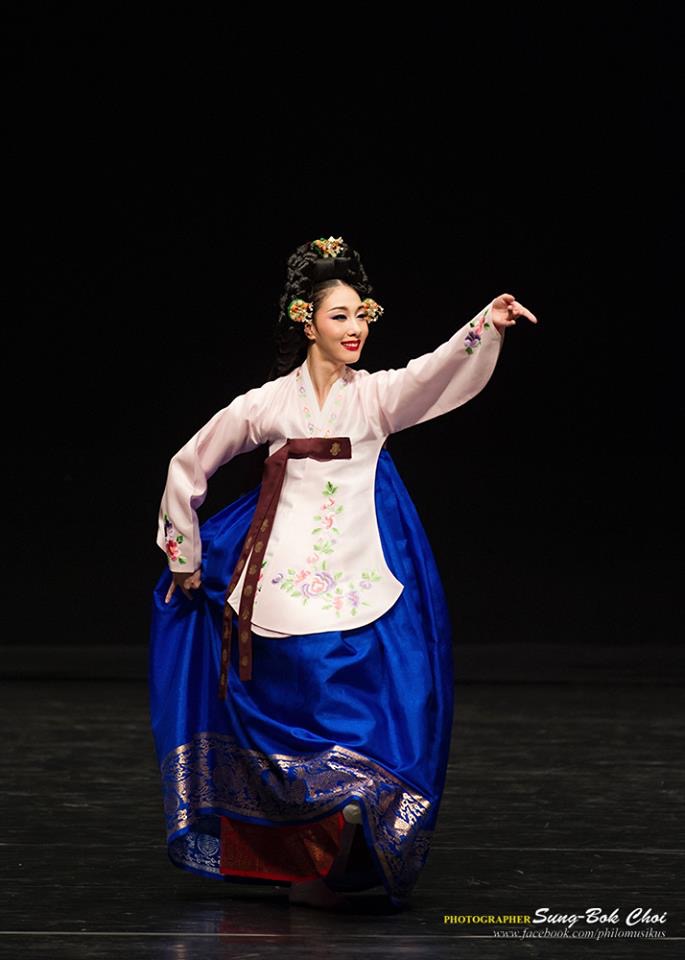Young Masters: Winners of the Onnara Gugak Competition
Monday, March 20th, 2017 at 6:30 PM
The Korea Society
(950 Third Ave., 8th Floor, New York, NY 10022)
Tickets: $20
Winners of the most prestigious gugak competition in Korea – the Onnara Gugak Competition – are coming to New York to showcase their top talents. These young masters of gugak will play the Gayageum Sanjo, Piri Sangryeongsanpuri, Jeongga Suyangsanga, and Arirang medley, as well as a dance performance of one of the most beautiful of traditional court dances, the Chunaengjeon, imitating the mage of a nightingale singing in the tree on a fine spring day.
ARTISTS
Piri - TaeHoon Choi
Awarded Presidential Prize at the Onnara Gugak Competition in 2016
Jeongga - SeungRan Kim
Awarded Gold Medal at the Onnara Gugak Competition in 2016
Gayageum - JeeHyun Cho
Awarded Gold Medal at the Onnara Gugak Competition in 2016
Dance - SolBee Oh
Awarded Gold Medal at the Onnara Dance Competition in 2016
PROGRAMS
1. Court Music / Piri solo "Sangnyeongsan" (7 mins)
"Pyeongjo hoesang" is music performed for court feasts during late Joseon period. "Pyeongjo hoesang" is basically "Yeongsanhoesang" for stringed instruments transposed a perfect 4th lower and rearranged for strings and wind instruments. The title "Pyeongjo hoesang" does not mean that the mode used in the piece is in pyeongjo mode but that the "atmosphere" of the mode is flat ("Pyeongpyeong"). It consists of 8 sections and the title of the first section is "Sangyoengsan." It is often performed as a solo piece for the daegeum or the piri. It has long breaths and lots of embellishments, allowing the performer to show off his musical skills. It has a total of 4 verses, with 20 beats per rhythmic pattern.
2. Folk Music / Gayageum solo "Gayageum Sanjo" (10 mins)
Gayageum virtuoso and progenitor of Sanjo, Kim Chang-Jo (1856 – 1919) first formulated this genre of solo instrumental music in the late 19th century. Today, each traditional Korean instrument has its own version of Sanjo, which is now the most frequently performed genre. Each rhythmic pattern of Sanjo constitutes a movement with the whole suite starting off slowly, and becoming progressively fast to the end. The long duration of these suites means that there are included a range of melodic segments, which make up different themes, while implying new themes through tension and relaxation.
3. . Court Vocal Music / Gasa "Eobusa" (5 mins)
The twelve Gasa still continue the traditions of Ha Gyu-il (1867–1937) and Lim Gi-jun (1868– 1940), and should not be confused with the literary genre of Gasa from the Joseon period, as they even use different Chinese characters. The twelve songs describe the country’s beauty, romantic love, and daily routines. They are accompanied by a modest ensemble consisting of janggu, daegeum, Haegeum, danso, and piri; and they use slow rhythmic patterns made up of five to six beats, but sometimes irregular rhythms.
4. Court Dance / "Chunaengjeon" (5 mins)
"Chunaengjeon" is court dance created in 1828 by prince Hyomyeong in the Joseon dynasty. The dance depicts a small and lovely nightingale singing on the branch of a willow tree on a spring day. It is a solo dance where the dancer wears yellow dress, representing the color of nightingale, and a red belt around the waist, dancing on a flower pattern drawn on the floor. The movements of the dancer are tiny the flower pattern being so small, but also in order to depict the movements of a nightingale in a most elegant manner. As tempo becomes faster, the dancer would fold her arms on her back, creating the famous beautiful pose called hwajeontae. Court dances were performed only in the audience of the king and required strict observance of decorum. Thus, the baring of one's teeth was always forbidden. The Hwajeontae, however, is the only exception and the dancer was permitted to smile subtly while performing this move.
5. "Arirang" (6 mins)
This song is well known as the most representative Korean folk song. It is usually handed down orally. Many regions have their own versions of "Arirang" and each version narrates different texts in its regional styles, such as "Haeju Arirang," "Jindo Arirang," "Jeongseon Arirang," "Miryang Arirang," and "Gangwondo Arirang." The term "gu" in "Gu Arirang" literally means "old" and was added to the title ever since a new version emerged.
THE NATIONAL GUGAK CENTRE
Gugak, or traditional Korean music, has come down to us through the ages, and contains the breath of Korean history and culture. The National Gugak Centre, founded with the aim of continuing to produce and disseminating traditional Korean music and dance, is the principal institution in this effort. The Centre’s Court Music Orchestra, Folk Music Group, Traditional Dance Theater, and Contemporary Gugak Orchestra actively perform for the purpose of preserving and developing gugak, whilst the Gugak Research Office was established for academic research into Korean music.
Apart from performance and research, the Centre is engaged in education, providing lectures for teachers, families, and foreign residents in Korea.
As well, the Centre’s museum owns about 5,000 items representing the history of Korean music.
Furthermore, the National Gugak Centre’s three affiliated branches focused on specialized areas, include the Namwon National Gugak Centre for Changgeuk, the Jindo National Gugak Centre noted for its training programmes, and the Busan National Gugak Centre which was established as an institution for national music for the Asia-Pacific region.
This performance is presented in collaboration with the Korea Society and the National Gugak Center.







